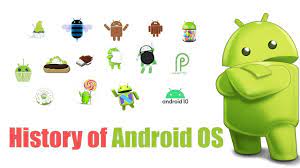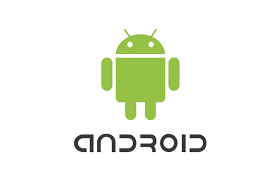Exploring Ubuntu MATE Desktop
Exploring Ubuntu MATE Desktop
Ubuntu MATE is a user-friendly and versatile Linux distribution that offers a classic desktop experience with modern features. Developed with simplicity and efficiency in mind, Ubuntu MATE aims to provide a stable and smooth computing environment for users of all levels.
Features of Ubuntu MATE Desktop
One of the key highlights of Ubuntu MATE is its traditional desktop layout, reminiscent of older versions of Windows or GNOME 2. This layout includes a panel at the bottom of the screen for launching applications, a system tray for notifications, and a menu for accessing programs and settings.
In addition to its familiar interface, Ubuntu MATE offers a range of features to enhance productivity and customisation. Users can easily tweak the appearance of their desktop with various themes, icons, and window decorations. The Control Center provides a centralised hub for managing system settings, making it convenient to adjust preferences such as display settings, sound configurations, and power options.
Software Selection
Ubuntu MATE comes pre-installed with a selection of essential software applications to meet users’ daily needs. This includes web browsers, office suites, multimedia players, email clients, and more. The Software Boutique allows users to explore and install additional software from curated collections, making it simple to discover new tools and utilities.
Performance and Stability
With its lightweight design and efficient resource management, Ubuntu MATE offers excellent performance on both older hardware and modern systems. The distribution is known for its stability and reliability, providing users with a consistent experience free from crashes or slowdowns.
Community Support
The Ubuntu MATE community is active and welcoming, offering support through forums, chat channels, and online resources. Users can seek help with troubleshooting issues, share tips and tricks for customising their desktop environment, or participate in discussions about the future development of the distribution.
Conclusion
Ubuntu MATE Desktop combines the best of both worlds: a classic desktop interface with modern functionality. Whether you are new to Linux or a seasoned user looking for a reliable system that prioritises ease of use, Ubuntu MATE is worth exploring. With its emphasis on simplicity, performance, and community engagement, Ubuntu MATE continues to be a popular choice among Linux enthusiasts worldwide.
Top 9 Advantages of Ubuntu MATE: A User-Friendly and Customisable Desktop Experience
- User-friendly interface with a traditional layout
- Customisable desktop environment with themes and icons
- Efficient resource management for optimal performance on various hardware
- Stable and reliable system, free from crashes or slowdowns
- Comes pre-installed with essential software applications for daily use
- Software Boutique for easy exploration and installation of additional software
- Centralised Control Center for convenient system settings management
- Active and supportive community for assistance and collaboration
- Combines classic desktop experience with modern features
Five Drawbacks of the Ubuntu MATE Desktop: Challenges for New and Experienced Users Alike
- Limited selection of pre-installed software compared to some other distributions.
- Customisation options may be overwhelming for new users unfamiliar with Linux.
- Updates can sometimes introduce compatibility issues with certain hardware configurations.
- Resource usage may be higher than more minimalist desktop environments, impacting performance on older hardware.
- Community support documentation may not always cover niche or advanced topics in depth.
User-friendly interface with a traditional layout
Ubuntu MATE Desktop stands out for its user-friendly interface that features a traditional layout, offering a familiar and intuitive computing experience. With a classic desktop design reminiscent of older operating systems, users can easily navigate the system using a panel for launching applications, a system tray for notifications, and a menu for accessing programs and settings. This traditional layout appeals to users who prefer a straightforward and efficient workflow, making Ubuntu MATE an excellent choice for those seeking a comfortable and easy-to-use Linux distribution.
Customisable desktop environment with themes and icons
One of the standout features of Ubuntu MATE Desktop is its highly customisable desktop environment, offering users the ability to personalise their workspace with a wide variety of themes and icons. This level of customisation allows users to tailor their desktop experience to suit their preferences and style, creating a visually appealing and unique interface that enhances productivity and user satisfaction. Whether users prefer a sleek, minimalist design or a more vibrant and expressive look, Ubuntu MATE’s extensive theme and icon options empower users to make their desktop truly their own.
Ubuntu MATE Desktop excels in efficient resource management, ensuring optimal performance across a wide range of hardware configurations. By prioritising system resources effectively, Ubuntu MATE is able to deliver a smooth and responsive user experience, even on older or less powerful devices. This focus on performance optimisation allows users to enjoy the benefits of a feature-rich desktop environment without compromising on speed or stability, making Ubuntu MATE an ideal choice for those seeking a reliable and efficient computing solution.
Stable and reliable system, free from crashes or slowdowns
Ubuntu MATE Desktop is renowned for its exceptional stability and reliability, providing users with a seamless computing experience free from crashes or slowdowns. This pro of the operating system ensures that users can work efficiently and without interruptions, making Ubuntu MATE a trusted choice for those seeking a dependable platform for their daily tasks. The robust performance of Ubuntu MATE Desktop underscores its commitment to delivering a consistent and hassle-free environment for users to navigate with confidence.
Comes pre-installed with essential software applications for daily use
Ubuntu MATE Desktop offers a convenient advantage by coming pre-installed with essential software applications for daily use. This feature saves users time and effort by providing a ready-to-use selection of tools, including web browsers, office suites, multimedia players, email clients, and more. With these applications readily available upon installation, users can quickly start using their system for a variety of tasks without the need to search for and install software individually. This streamlined approach enhances the user experience and ensures that users have the necessary tools at their fingertips from the moment they boot up their Ubuntu MATE system.
Software Boutique for easy exploration and installation of additional software
A standout feature of Ubuntu MATE Desktop is the Software Boutique, which simplifies the process of exploring and installing additional software. This user-friendly tool provides curated collections of applications, making it easy for users to discover new tools and utilities that enhance their computing experience. By offering a streamlined and intuitive way to access a wide range of software, the Software Boutique empowers users to customise their desktop environment with just a few clicks, enhancing productivity and personalisation.
Centralised Control Center for convenient system settings management
Ubuntu MATE Desktop offers a significant advantage with its Centralised Control Center, providing users with a convenient and streamlined way to manage system settings. This intuitive hub allows users to easily adjust various preferences, such as display settings, sound configurations, power options, and more, all in one central location. By consolidating these settings into a single Control Center, Ubuntu MATE simplifies the process of customising the desktop environment and ensures that users can efficiently fine-tune their system according to their preferences.
Active and supportive community for assistance and collaboration
The active and supportive community surrounding Ubuntu MATE Desktop serves as a valuable resource for users seeking assistance and collaboration. Whether troubleshooting technical issues, sharing tips for customisation, or engaging in discussions about the development of the distribution, community members are readily available to offer guidance and support. This collaborative environment fosters a sense of camaraderie among users and developers alike, making Ubuntu MATE not just a software platform but a vibrant community dedicated to helping each other succeed in their Linux journey.
Combines classic desktop experience with modern features
Ubuntu MATE Desktop offers a unique advantage by seamlessly blending the familiarity of a classic desktop layout with the convenience of modern features. This combination allows users to enjoy a traditional computing environment that is enhanced with contemporary functionalities, providing the best of both worlds. Whether users prefer the simplicity and efficiency of a classic desktop or appreciate the advanced capabilities offered by modern systems, Ubuntu MATE Desktop caters to diverse preferences while ensuring a seamless and intuitive user experience.
Limited selection of pre-installed software compared to some other distributions.
One drawback of Ubuntu MATE Desktop is its limited selection of pre-installed software when compared to some other Linux distributions. While Ubuntu MATE does come with essential applications for basic computing tasks, users may find themselves needing to manually install additional software for more specialised needs. This can be a minor inconvenience for users who prefer a more comprehensive software package out of the box. However, the Software Boutique feature in Ubuntu MATE provides a convenient way to explore and install a variety of software applications, helping users expand their software arsenal easily.
Customisation options may be overwhelming for new users unfamiliar with Linux.
For new users unfamiliar with Linux, the extensive customisation options offered by Ubuntu MATE Desktop may present a significant challenge. The abundance of themes, icons, and settings available for personalising the desktop environment can be overwhelming and confusing for those who are not accustomed to the level of control that Linux distributions provide. Navigating through these customisation features may require a learning curve and patience to understand how each option impacts the overall user experience. While customisation is a key strength of Ubuntu MATE, it can also be a drawback for beginners seeking a more straightforward and streamlined computing environment.
Updates can sometimes introduce compatibility issues with certain hardware configurations.
One downside of Ubuntu MATE Desktop is that updates can occasionally lead to compatibility issues with specific hardware configurations. While updates are essential for improving security and adding new features, users may encounter challenges when certain hardware components do not interact well with the updated software. This can result in disruptions to functionality or performance, requiring users to troubleshoot and potentially seek alternative solutions to ensure their system runs smoothly. It is advisable for users to research compatibility issues before applying updates and to be prepared to address any unforeseen issues that may arise.
One drawback of Ubuntu MATE Desktop is that its resource usage may be higher compared to more minimalist desktop environments, which can have a noticeable impact on performance, especially on older hardware. The additional features and visual elements that contribute to the user-friendly experience of Ubuntu MATE may require more system resources, potentially leading to slower responsiveness and decreased efficiency on less powerful machines. Users with older hardware looking for optimal performance may need to consider this factor before choosing Ubuntu MATE as their desktop environment.
While Ubuntu MATE Desktop boasts a supportive community, one potential drawback is that its documentation may not always delve into niche or advanced topics with the depth some users require. This limitation could pose challenges for individuals seeking detailed guidance on specialised or complex issues within the operating system. Users exploring advanced configurations or niche functionalities may find themselves needing to rely on external sources or forums for more comprehensive information and assistance.











